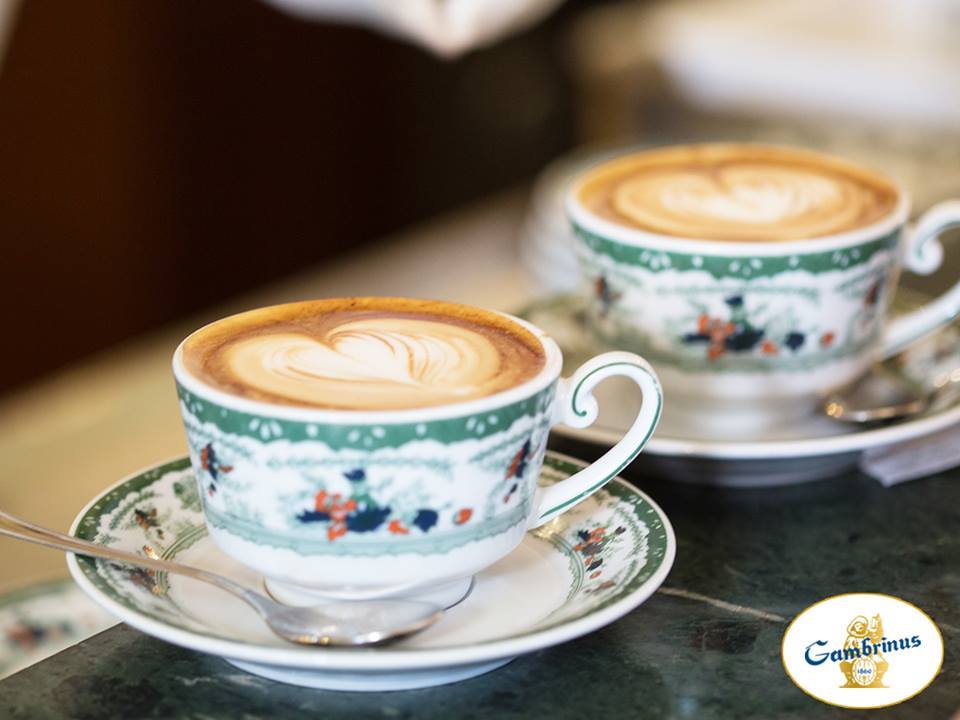Cappuccino: when coffee meets milk
Article written by Michele Sergio published in IL ROMA on 22 April 2018
The Italians’ favorite breakfast is undoubtedly a croissant and a cappuccino. Two are the only ingredients to make cappuccino: coffee and hot milk.
The commercial success of the cappuccino is right in the simplicity of the ingredients and in the goodness, two characteristics that have been the winning cards and that have made it spread in every corner of the world.
But why is it called that? And where and when was he born? There is no unanimity of opinions about the etymology of the term but the most probable hypothesis that derives from the similarity of the color of this drink with the color of the brown coat of the Capuchin monks who used to drink it when it began to spread in Europe. The most accredited version wants the Capuchin to be born in Vienna at the end of the seventeenth century, but it will take another two centuries to finally reach the Cappucino as we know it today. Three fundamental stages: the “invasion” of coffee in Europe since the end of the 1600s; the spread of the milk pasteurization process at the end of the 19th century, which made milk consumption safer for human health; the invention of the professional espresso coffee machine, now in the 1900s, which allowed the preparation of cream and milk foam.
Not everyone agrees on the recipe or to better say about the proportions between milk and coffee and how to prepare it. We can say however that the most accredited recipe is that for which the Cappuccino should be composed of one fifth of coffee and four fifths of hot milk whipped cream (50/60 degrees centigrade) preferably (in the Neapolitan version) topped by a centimeter of milk foam, with added sugar (according to taste) and a sprinkling of cocoa.
To be stiffly served in a ceramic / porcelain cup.
We Italians like to drink it at breakfast, foreigners and esterophiles enjoy it at other times of the day. Unlike in the past, the Cappuccino, with the ever more widespread use of manual and electronic domestic machines, can also be prepared at home and with excellent results. On the Internet and on social networks, more and more frequently it is possible to see tutorials where “expert baristas” make cappuccinos with the technique of “Latte Art” or the technique of cappuccino decoration.
There are many variations on the subject. List all of them is almost impossible. We mention among others the most requested in the bars of the peninsula.
CaffèLatte: the line between milk and cappuccino coffee is truly diaphanous. Purists claim that the milk-coffee is made up of 125 cl of milk and 25 cl of coffee and is served in a glass without foam. Neapolitan baristas, purists par excellence, offer it, in fact, without milk foam, respecting, in principle, the said proportions.
Latte macchiato: The differences with cappuccino are becoming more and more subtle … The Neapolitan tradition offers, in a large ceramic / porcelain cup, milk heated with a steamer and half a cup of coffee poured over the layer of cream.
Cold Cappuccino (or Ice Cappuccino for Americans) is now routinely also in our region. Excellent as a summer drink.
Frappè di cappuccino, which has had considerable success in America, is a cold cappuccino with the addition of whipped milk (and whipped cream) proposed by the restaurant chains to stars and stripes in various flavors: vanilla, chocolate, caramel, just to name some. In Italy, for now, it does not have a significant diffusion, but even here it starts.
Finally, for those who do not tolerate caffeine or lactose, here are Cappuccino di Orzo and Cappuccino di Soya: there will not be coffee in the first and cow’s milk in the second, but de gustibus – and health (!) – non est disputandum.




Comments are closed.